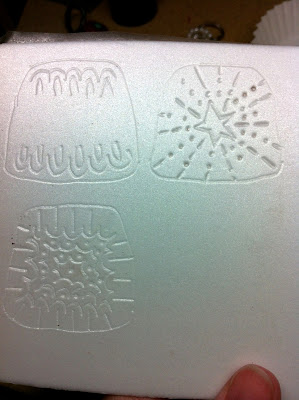Recently a friend showed me some stones that were in nice little gem jars and had an official-looking 'Certificate of Authenticity' accompanying them. They happened to be rubies, about 7-9 carats each, and they were appraised on the 'certificate' for over $1000. They had been given to her from a family member, passed down, and were certainly NOT worth anywhere close to that amount.
It got me thinking, that just because a gem is called a 'ruby', or 'emerald', 'sapphire' or even diamond for that matter, doesn't mean it has unlimited value. Most of you out there who are jewelry-makers already know this stuff, but the average person probably doesn't, and it's up to us to let them know the truth before they get swindled. (Or at least, before they think they're sitting on a gold mine of precious gems....)
So for you average person out there, who loves gems but doesn't know much beyond that, let me tell you, there are various factors used in the industry to 'grade' gemstones. Most of us know all about the diamond rating system, but colored gemstones also have categories of grading.
You may have a ruby, but you may not have a gem-quality ruby.
So let's go through some of the factors, using the pics below of my current ruby stock (question: what is the most valuable stone below and how much is it worth? answer at end of post)
Also, take a look at the GIA (Gemological Institute of America) website for more information about stones:
Here's a collection of rubies- the small faceted ones on the right are 4mm round and the faceted ones on the left about 7mm round. That should give you some idea of size. That leads us into our first category- size. Obviously, a larger gem is more valuable and rare than a smaller one. That said, not everyone wants a 25-carat ruby on their finger. Each person has individual tastes and for some, bigger is not better. Still, generally a larger sized stone will be worth more than a smaller stone per carat. So, does this mean the large rectangular stone is worth the most?
The next category is color. This includes hue (red, green, blue, etc...), saturation and tone (light to dark). In general, rich bright colors rate a higher price. So, for some, a deep dark amethyst is the cat's meow. But for others, they don't like the darker purples; they like the lighter purple. Again, some allowance for personal preference here. But if you look at the above stones, do you see some that are brighter and more color-saturated than the rest?
The next category is clarity. This is basically the same as inclusions. The clearer a stone is, with the least visible inclusions in the stone, the more valuable it is. In the above pic, which stone(s) fits that definition? Did you know that emeralds are almost never free of inclusions? They and tourmalines fit the category of stones nearly never inclusion-free. There are, of course, some stones that are almost always inclusion-free: aquamarine and smoky quartz to name a couple. Then there are a bunch of stones in the middle- often having inclusions, like peridot, garnet and iolite. So, if you see an emerald that looks 'too perfect' with amazing bright color but no visible inclusions, it's either got to be priced astronomically high, or it's not real (read: lab-created). Good to know!
The final category is cut. Cabochons (the bottom stones in the above pic) are usually worth less than faceted stones, simply because they don't take as long and require less skill to cut. Opals may be the exception to this rule. That said, there are many stones that are poorly cut- not symmetrical, with scratches, poor polish, and facet junctions not meeting up. This is a hard category to judge for the average person. It takes looking at a lot of stones to judge this one.
So, giving what you now know about stones now, take a stab at which of the above stones are worth the most??
answer: the pair at the left
Why? Well, the rectangular stone is the largest, that's true, but it's so full of inclusions that it's opaque. There's no transparency. It's a nice color, but not as rich and color-saturated as the pair on the left. They're also faceted, which adds to the value. And the cut is good- they're nice and deep, while the faceted stones to the right are quite flat in comparison, and the color is not as rich.
So, for these 7mm round faceted rubies, what's the cost? Well, they cost me $28 for the pair. Not as much as you thought, eh? Well, that's because there's a whole lot more quality available than this in a ruby. Sorry I don't have a really expensive one to show you :( Maybe someday.... The prettiest rubies I've ever seen are a lot more transparent and bright red than these.
If you want to see more stones and prices, simply do a search on Ebay and you can see a multitude of gem grades and prices. Of course, the best place to buy gems is from a reputable gem dealer. If something seems too good to be true, it probably is. Many gems today are artificially colored or treated. Or not even real. But that's a whole different post....














